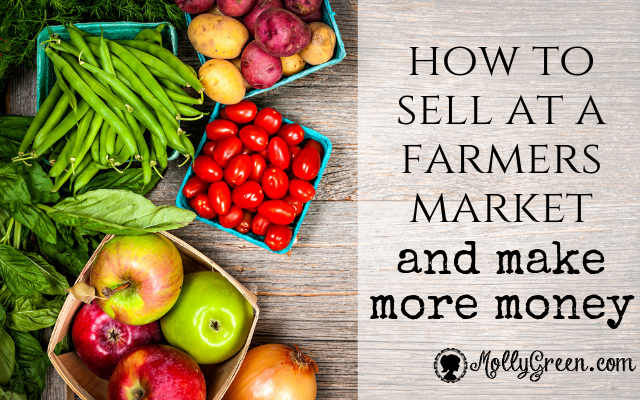
Farmer’s markets are very popular. It’s fun to shop for fruits, vegetables, baked goods and homemade crafts from local vendors. Maybe you like to meet your friends there or hang out there on the weekends. But, have you ever thought about selling something at a farmer’s market? It’s a great way to make some extra money by selling your homemade or farm goods, network with other people doing the same thing as you and really just have a fun time.
But, how do you sell at a farmer’s market and make money? Today, we are going to cover exactly that (and how to make more money if you are already selling there!)
How much does it cost to sell at a farmer’s market?
If you want to sell at a farmer’s market, you’ll need to spend some money upfront. Unfortunately, that’s the price of any business!
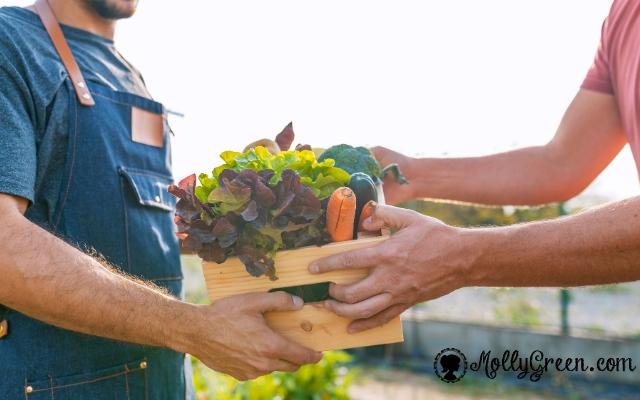
Farmer’s markets charge a fee for a stall or area.
It’s a one-time fee for the season, or the week depending on the market. The fees can be as low as $100 to $600 per season. The more popular farmer’s markets charge more. Besides the stall fee, you’ll need a table or tables and a chair or two, if they aren’t already provided. If your farmer’s market doesn’t provide them, you can purchase them at a discount store.
You might also want to purchase a collapsible tent in case of rain if the market is not held under an awning or in a building. These run around $150. They’ll last you several seasons, so it’s a good investment. Plus, you (and your goods) will stay dry!
Do you need a license to sell at a farmer’s market?
If you sell baked goods at the farmer’s market, your state may require you to have some certifications. This could include a food permit. Food service certifications or health inspections of your home kitchen or commercial kitchen. Some states allow for the simple Cottage License, while other states require much more intense certifications, You will definitely want to check with your state to see what the requirements are
Some cities require business licenses, too. Many farmers’ markets require liability insurance and will ask you for proof of this when you submit your application to sell there.
Do your research ahead of time, fill out the forms and pay the necessary fees well before the selling season. Otherwise, you may miss several weeks of sales while you wait on all your forms to clear. I can’t stress how important this is!
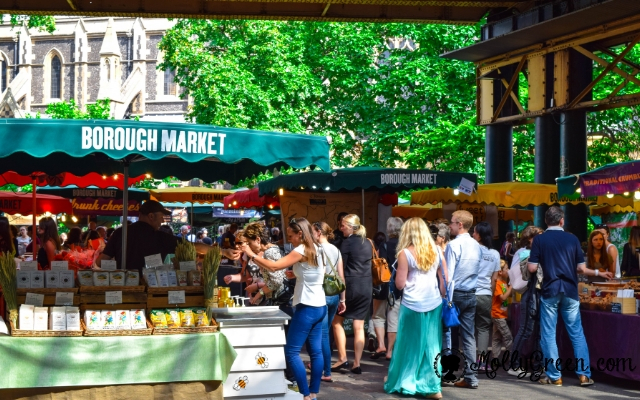
Can I sell homemade food at a farmer’s market?
Home-baked goods sell quickly at farmer’s markets. Every state is different about its regulations for sales of processed foods. Some states permit farmer’s markets to sell certain foods, others do not. This is called a state’s Cottage Food Laws. Most states do not require you to have a licensed commercial kitchen. You can sell jams, jellies and baked goods without a licensed kitchen or any inspections. But they will require you to label your foods with the weight, volume, your name, and address plus the words “this item is home produced” and a list of ingredients. Pickles, canned goods or refrigerated foods aren’t allowed under some states cottage laws. Again, please be sure you do your research well ahead of the selling season and get any appropriate certifications and/or inspections done so you aren’t winging it.
How to decide what to sell at a Farmer’s Market
So, you think you want to sell your product at your local farmer’s market. But where do you begin? Here are a few tried-and-true ways to decide what will do well:
Do your homework
Visit the farmer’s market where you want to sell your products before you start selling there. Get a feel for the market’s atmosphere (and your competition). Is it a ‘shop and go’ kind of market? Or does it have more of a social atmosphere with a playground for kids and live music? Are there lots of shoppers? Is the location good? What days will the market be there?
Talk to the vendors
Get to know some vendors. Ask them about their experience. What are the strengths and weaknesses of the location or the market? A lot of your success can be determined by the atmosphere of the market, how it’s managed and how the vendors respect and promote each other.
Figure out the rules
Find out what you can sell at this farmer’s market. Each market has its own limitations on what you can and can’t sell. Ask the market manager about what you can sell, what permits you’ll need and the costs involved for selling at this market. Befriend the market manager so that down the road you’ll have a reliable resource person to go to if you have problems.
Keep it small
Start small. Some farmer’s markets allow day vendors instead of seasonal vendors. This is a great way to get a feel for the market, the shoppers and the other vendors. Keeping it small means you haven’t invested tons of money into this endeavor if you realize selling at a farmer’s market isn’t for you.
Determine your niche
Once you’ve picked out your farmer’s market, then you need to decide what you want to sell. Will your product be interesting to customers? Some markets are saturated with certain products (this often happens with produce – think 20 vendors selling tomatoes!)
Tip: if you are going to sell something that is very saturated in the market, add some other products that make your table even more unique.
Count the costs
Selling your products at a farmer’s market is a big commitment. It’s exciting to start, but in July when the thermometer hits 100 degrees at 8:00 in the morning, you might question your sanity. Inclimate weather, slow sales, and few shoppers are apt to happen. Before you invest your time, energy and money into this venture, be sure to count the cost.
Are you okay with losing your Saturdays (or whatever day your local farmer’s market meets) all spring, summer, and fall?
Will you be okay with setting up, selling and tearing down by yourself?
Do you need someone to help you?
These are all questions to consider when counting your costs!
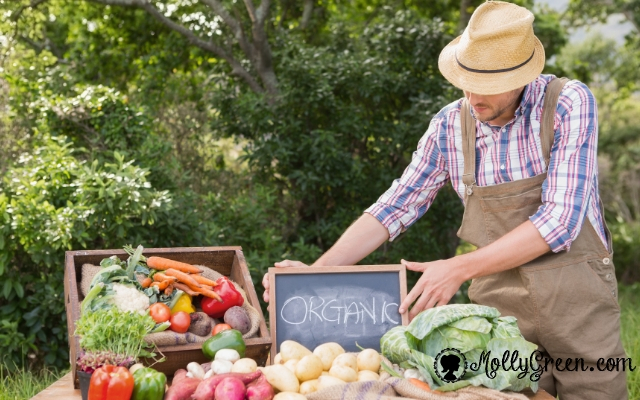
How can I increase my farmer’s market sales?
So, you’ve filled out all your application forms, received your permits and certifications. But, there’s lots of competition at the farmer’s market. Here’s the simple question: how will you drive the customers to your stall and increase your sales?
Here are some suggestions:
Good signs
Draw your customers in with creative signs. Besides the name of your business, add other information. Include your logo, website, and media usernames so people can connect with you later in the day, month or year. You may also want to hang a banner above your stall so customers can see your business name above the other stalls. This is just a way to add a bit of professionalism to your table, which sets you apart and definitely makes you stand out as a business.
Price things right
There’s a good chance you’re not the only one selling your item. For example: If you’re selling crocheted quilts, scout out what other vendors are selling their crocheted quilts for and set your price accordingly. Charging too much will drive customers away, pricing too little will hurt your income. This goes back to the classic “supply and demand” idea in economics. If there’s a tight competition for those quilts at the market you’re selling at, you might have to come down on the price. But, if you are the only one there selling them, you can price them a bit higher.
Don’t overdo it
Research shows that too many items to choose from will cause customers to not buy at all. Try selling 3 different kinds of bread instead of 10. Customers like to browse, but they don’t like to be overwhelmed. Oftentimes, too many choices cause people to leave without buying anything at all.
Have a good display
Be sure to show off your items in an inviting way. Put your products front and center so your customers can clearly see what you’re selling. Draw people in with creative displays, chalkboards or photos. Use baskets for breads, boxes to lift your jewelry up off the table, or drape different colored cloths to make your items stand out. Some vendors wear their items for people to see what they will look like.
Think outside the box for your display-add shelves, stands or hooks for hanging your products. Creative displays is often key to increasing your sales.
Remember – packaging can make all the difference in whether or not you make sales!
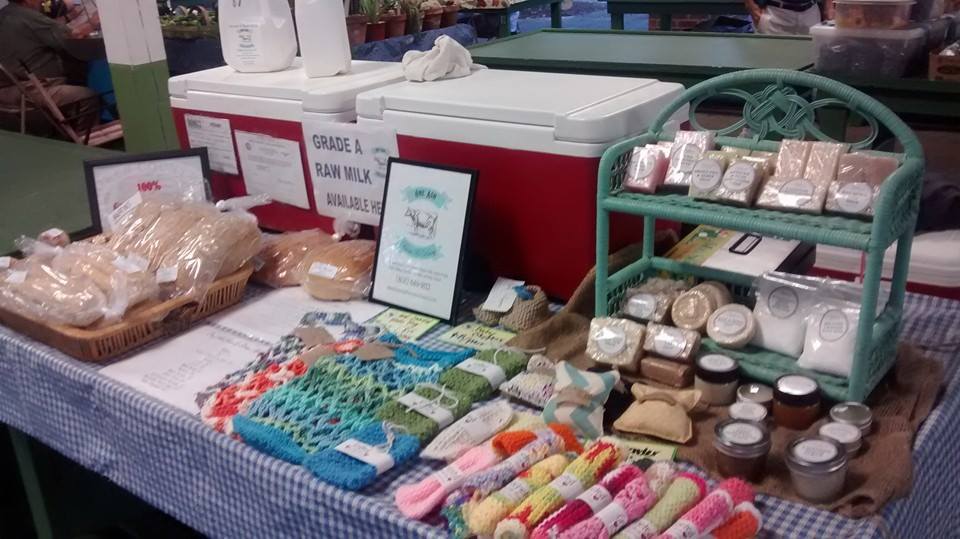
Accept credit cards and cash
It’s a good idea to accept credit card payments AND cash. Most people don’t carry cash with them, which means you can lose sales if you don’t accept credit cards. It’s easy to have a mobile payment system through PayPal or using a card reader services like Square.
Can I really make money selling at a farmer’s market?
Farmer’s markets have grown in popularity in many areas. Some markets have sprouted up only to shut down after a few years, while others are booming. This is really just a result that the competition is growing so shoppers go to larger markets that offer more variety. Smaller markets don’t always make it, while some do. Shoppers are picky about price and locally grown foods. If a shopper can go directly to a local farmer and buy their vegetables, they’ll avoid the farmer’s market. Another growing problem has been the lack of local farmers to supply produce. Some areas naturally have more farmers while many cities lack access to farmers.
Set yourself apart from the other vendors. Sell products that no one else is selling – this will guarantee you get shoppers and sales. If you’re selling herbs, make your booth the place shoppers want to come to get their herbs. Do everything you can to create a consistent base & foundation of customers. Put on your salesman hat. Talk up your products – the organic nature, the best soil, that you never use pesticides, etc. Customers will remember that you use special water to grow your herbs and that you give a free tea recipe card with every bunch of herbs they purchase. Establishing your customer base is key, just like with any business!
Remember to display your products with a unique flare. Sell baked goods at the farmer’s market wrapped in brown paper stamped with your website. Give samples with every purchase of a loaf of bread. Let customers smell your soaps and lotions or, better yet, give them soap shavings for free! Shoppers seek the vendors they remember.
How do I find farmer’s markets near me?
Selling at a farmer’s market can be profitable, but be sure to do your research ahead of time. Learn everything you can about the laws of your state and about the farmer’s market where you want to sell. There are sure to be several local markets in your area.
If you’re stuck with where to find farmer’s markets near you, these are some great resources to help in your search:
What it takes to be successful at a farmers market
Selling at a farmer’s market is all about preparation and people. Research the local laws and local market rules. Consider what you’ll sell – is it something shoppers can’t get anywhere else? Invest in tables, chairs and a tent. Then, develop a good display and selling campaign.
These things are vital to your success at a farmer’s market. I know it can be a bit intimidating at first, but remember – once you get a routine down, it will be smooth sailing and you can focus on pure marketing and creation!
If you’re not up to the task of sales, display and selling schemes then selling at a farmer’s market may not be your thing. Selling at the farmers market definitely requires a lot of conversation, talking up your products and relationship-building. Develop friendships with other vendors and the market manager. Be prepared and ready to talk a lot, and to be very interactive. If you can do that, you are sure to have a winning strategy to increase your farmer’s market sales!




